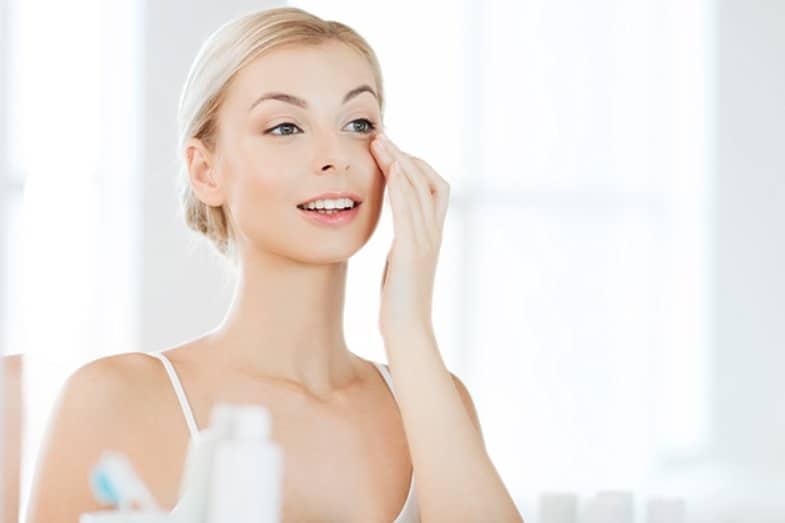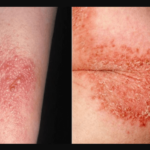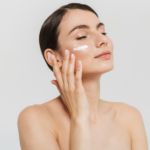Do you have pasty skin? “Pasty” is a common term used to describe a specific skin tone. In this article, I’m going to address what pasty skin tone is and what causes it.
What is pasty skin tone? Pasty skin tone, also called pallor or pale complexion, is having lighter than normal skin color and hue. Paleness can be throughout the body or only in certain areas. Some people are naturally born with a pale complexion, and it’s perfectly normal. However, having pasty skin can also be due to a number of reasons.
Here are some of the common causes of pasty skin:
- Melanin deficiency
- Lack of sun exposure
- Albinism
- Vitiligo
- Anemia
- Vitamin deficiency
- Infections
- Certain medications
It is completely normal and safe for people to be born with pale skin. However, there are cases in which skin paleness can be a sign of an underlying problem. Read more to learn about what pasty skin tone is, as well as what may cause it and what can be done to improve it.
What Is Pasty Skin Tone?
Pasty skin tone is described as having pale and lifeless skin color. People can be naturally born with fair complexion and can technically be called pale-skinned. Despite being pale, they can even have paler skin due to certain factors and medical conditions.
Individuals with pasty skin may also have pale lips, tongues, and hands. If this is the case, your natural complexion is not the only reason you are pale. You may have underlying issues or medical conditions.
In reality, everyone can have pasty skin no matter what their skin color is. Even dark-skinned people can experience paleness. However, it is harder to detect in people with dark skin tones.
There are plenty of reasons why you might have skin paleness. As mentioned, pale skin may run in your family.
Pasty Skin Tone Causes

Pasty skin or skin paleness can have different causes. Its leading causes are categorized into two. First, genetics and skin composition can affect your complexion. Second, certain medical conditions or health problems can make your skin look pasty. Read on to know more about the causes.
1. Genetics and Skin Composition
- Natural Complexion – Some people are born with a fair complexion. If you have any relatives who also have pale skin, such paleness may be due to genetics. Unless there’s also paleness in your lips, tongue, and hands, there is nothing to worry about.
- Melanin Deficiency – Our body contains cells that are called melanocytes. These cells produce melanin, which is the substance that gives color to the skin. If these cells can’t produce enough melanin, your skin can appear pasty or pale. Certain medical conditions can also contribute to lesser melanin production.
- Lack of Sun Exposure – Lack of sunlight is also a common cause of paleness and pasty skin tone. When the skin is exposed to sunlight, our body produces melanin as a defense mechanism. Melanin protects the skin from harmful UV light. Without sun exposure, the body wouldn’t need to produce melanin. As previously mentioned, less melanin means a fairer complexion.
- Albinism – This condition is due to a genetic mutation that causes the skin to become extremely pale, with little to no color. It is a form of melanin deficiency where there is little to no melanin on the skin. Those with albinism usually have lighter hair color, along with having blue eyes. In partial albinism, certain areas of the body are only affected. However, full albinism affects the whole body and gives it a pasty white skin tone.
- Vitiligo – Like albinism, vitiligo is a skin condition that makes the skin pale. The difference is that paleness occurs in patches. One famous person who had this condition was Michael Jackson. White and pale spots appeared on his body due to this condition.
2. Medical Conditions or Health Problems
- Anemia – One of the most common causes of paleness is anemia. It is a condition that prevents the body from producing enough healthy red blood cells. Having low levels of red blood cells and hemoglobin, which gives the color of the blood, may cause the skin to look pasty.
There are many types of anemia, with iron deficiency being the most common. Other types of anemia include hemolytic anemia, aplastic anemia, and sickle cell anemia.
- Low Blood Pressure – Pale skin can also be a sign of hypotension, also referred to as low blood pressure. Due to low blood circulation, the body may not be able to deliver enough red blood cells and oxygen throughout the body. Additionally, any condition that causes low blood pressure, such as exposure to harsh temperatures, can also cause pallor.
- Vitamin Deficiency – Aside from iron deficiency, not getting enough vitamins can also make the skin pasty. Lack of vitamin B-12, also called folate, can induce anemia. Without these vitamins, the body won’t be able to produce enough supply of red blood cells. Similarly, malnourishment can also contribute to having pasty or pale skin.
- Blood Loss – Paleness or pallor is also a good indication of severe blood loss, whether internally or externally. Bleeding accompanied by paleness should be treated as a medical emergency. Abnormal bleeding can be a result of major surgery, injury, internal ulcers, or heavy menstruation.
- Infections – Certain infections may cause the skin to look pale. Sepsis, for example, is an infection of the bloodstream causing damage to the red blood cells. Lesser red blood cells mean paler complexion. Common infections, such as the flu and colds, can also cause paleness.
- Certain Medications – Paleness can be a side-effect of some drugs. Some medications, especially when overdosed, can cause conditions that induce paleness. A blood disorder called hemolytic anemia can cause pale skin, especially when there is an excessive intake of certain antibiotics and nonsteroidal anti-inflammatory drugs.
These are just a few common causes of pale skin. If you are naturally pale and you have relatives with the same complexion, there is likely nothing to worry about.
However, if you are experiencing symptoms that are accompanied by skin paleness, it is best to seek advice from your healthcare provider for proper diagnosis and treatment.
Regardless of the cause, there are plenty of ways to deal with pale skin. Read on to learn more.
Ways to Deal with Pasty Skin Tone

If you have pale skin, there could be times when you wished for a darker complexion. Below are some of the ways to deal with pasty skin:
1. Accept Your Skin Color
Before anything else, if you have naturally pale skin, it’s a good idea to try to accept your skin tone. Natural paleness is not necessarily bad. Having natural pale skin can be an attractive feature if you know how to take care of your skin.
Even people with vitiligo, albinism, and other conditions that cause a pasty white skin tone or pale skin, can be confident with their skin color. There are even celebrities known for their gorgeous pale skin. If it’s not bothering you or anyone, it’s best to accept your skin tone. If you feel you need more color, you might want to try other suggestions below.
2. Boost Melanin Production
Melanin is a pigment that is responsible for the color of our skin, eyes, and hair. It also protects the body from UV rays and decreases the risk of skin cancer. One way of achieving a less pale complexion is to increase the production of melanin in your body.
Studies suggest that taking in nutrients, such as antioxidants, can increase your melanin level. Dark leafy vegetables are good sources of antioxidants.
3. Sun Exposure
Sun exposure is also an excellent way to help improve your melanin levels and achieve a darker skin complexion. When sunlight hits your skin, your body’s response is to produce melanin, which filters out harmful rays. At the same time, you can also benefit from vitamin D.
Tanning is also a good alternative, especially if you live in places where there is not enough sunlight. However, to be safe, it is still best to check with an expert before going through a tanning session.
Try the Tan Towel Self Tan Towelette Plus. It can be hard to tan during winter seasons, where there is limited sunlight.
Click here to see it on Amazon.
With this natural sunless tan towel, you can go tanning wherever and whenever you want. It is effortless to apply, and at the same time, exfoliates and moisturizes your skin.
4. Eat Foods Rich in Iron
Eating foods rich in iron can make a huge difference when it comes to improving your skin color, especially if you have anemia. Iron is essential for creating more red blood cells and hemoglobin. Seventy percent of our red blood cells are made up of iron. Foods rich in iron are green vegetables, nuts, seeds, beans, and grains. You can also take iron in supplement form.
For an excellent vitamin for dry skin, take a look at our top pick, the Garden of Life Vitamin Code. Garden of Life includes the best ingredients along with live probiotics, enzymes, and antioxidants for greater absorption.
Click here to see it on Amazon.
Click here to see it on Amazon.
Taking supplements can be a huge help for achieving a better and darker complexion. Garden of Life Multivitamin provides you with all the nutrients you need to achieve healthier-looking skin.
5. Regular Exercise
Regular exercise can improve a lot of our body functions, including blood pressure. It promotes healthy circulation and helps the body to achieve better overall health. Exercising outdoors, like a morning jog or walk, can hit two birds with one stone by being out in the sun while working out.
6. Get Enough Sleep
Many people underestimate the many health benefits of getting enough sleep. Without enough sleep, our body won’t be able to repair and produce new cells. Staying late at night can also decrease red blood cell levels, leading to low blood pressure and anemia.
Yes, beauty sleep is real. Thus, make sure you get enough sleep so that you can wake up with glowing skin.
7. Eat Healthy Food
Your skin will glow if you take good care of your body through healthy eating. Not taking the recommended vitamins will make your skin lifeless and pale.
To have a balanced diet, you also need to eat fruits and green vegetables. Green leafy vegetables are good sources of iron and folate. These nutrients aid in the production of red blood cells.
8. Take Vitamins or Supplements
Sometimes, it may be hard for you to include all the required vitamins and minerals in your daily diet. For this reason, you may need to supplement with vitamins and minerals. Studies have shown that taking vitamins A, C, and E can drastically improve your overall skin health.
Try the Garden of Life Multivitamin for Women – Vitamin Code Raw One Whole Food Vitamin Supplement with Probiotics.
Click here to see it on Amazon.
With the Garden of Life Multivitamin for Women, you won’t have to worry about not having the required vitamins and minerals of your body. This multivitamin is specially formulated for women to achieve healthy skin and body.
9. Wear Makeup
Applying makeup can be a temporary way to deal with your pasty skin. You can use makeup to make your complexion less pale. Makeup can also accentuate a fair skin tone, making it pleasing to the eyes. Although it’s not a permanent fix, wearing makeup can make you feel good and boost your self-confidence.
Conclusion – What Is Pasty Skin Tone and Its Causes?
So to revisit our initial question: What is pasty skin tone? People with pasty skin have a lighter than usual skin complexion. There are many reasons why people have pasty or pale skin. Natural skin complexion, melanin deficiency, and rare genetic disorders like albinism can cause pale skin.
Having pasty skin can also be a sign of an underlying condition. Anemia and low blood pressure, including deficiencies in iron and other vitamins, can be some of the causes of pasty skin.
If you have unnatural paleness and experiences paleness in your mouth, then it’s best to consult a doctor to determine if you have underlying health problems.
Lastly, there are many ways to deal with pale skin. Whether you’re naturally pale or experiencing pale skin due to certain conditions, there are steps you can take to achieve healthier skin. Regular exercise, a healthy diet, taking supplements, and a little sunlight can go a long way in giving you that glowing, youthful skin.
Related reading:
What Is Pale Skin Tone? (With Pictures)
Pale Skin and Black Hair for Caucasians









![Golden Brown Skin Tone - What Is It? [With Pictures] golden brown skin](https://skincaregeeks.com/wp-content/uploads/2021/04/golden-brown-skin-150x150.jpg)
![Neutral Skin Tone Defined [and Best Colors for Neutral Skin] neutral skin tone](https://skincaregeeks.com/wp-content/uploads/2021/05/neutral-skin-tone-150x150.png)





